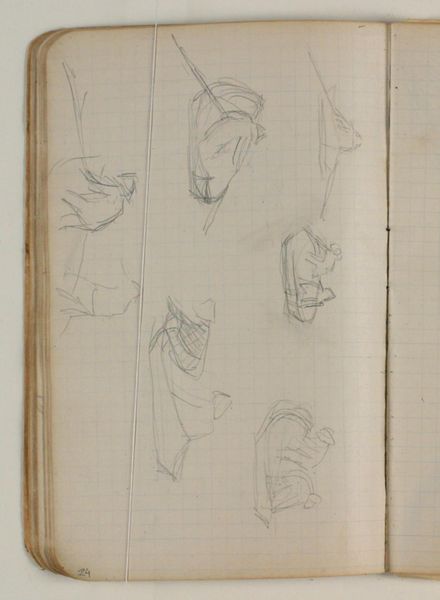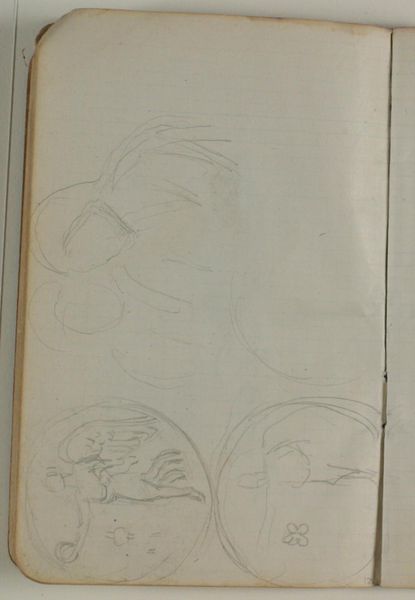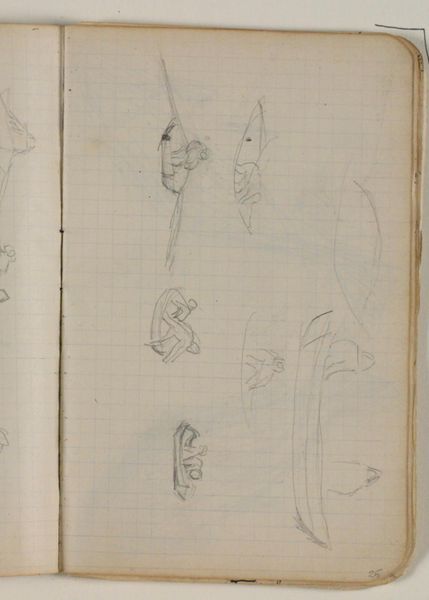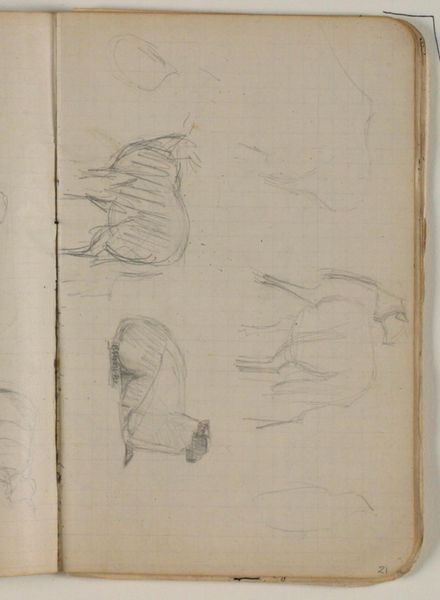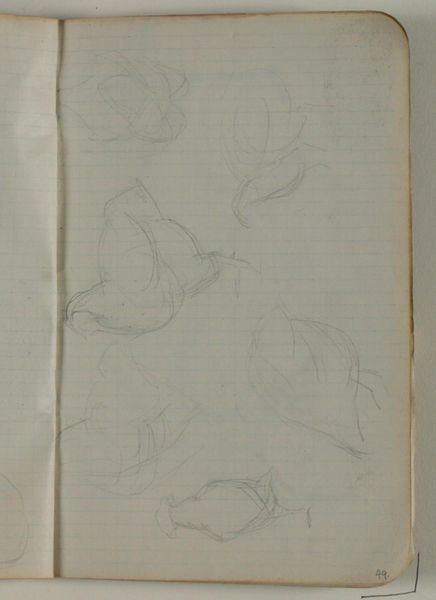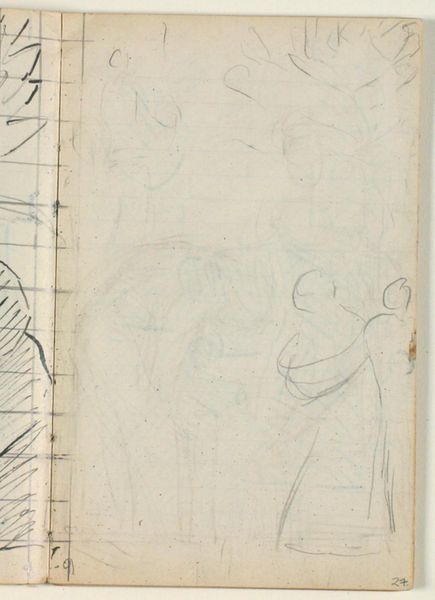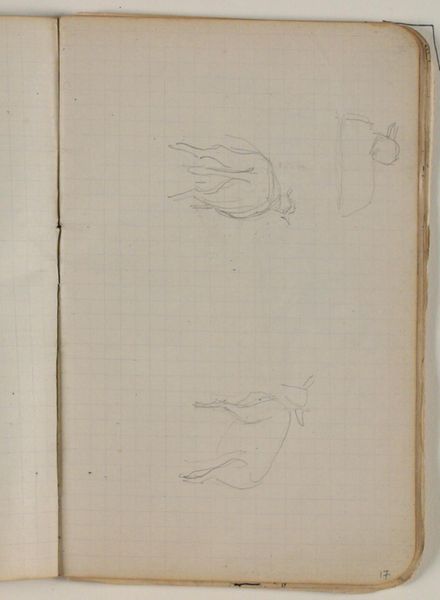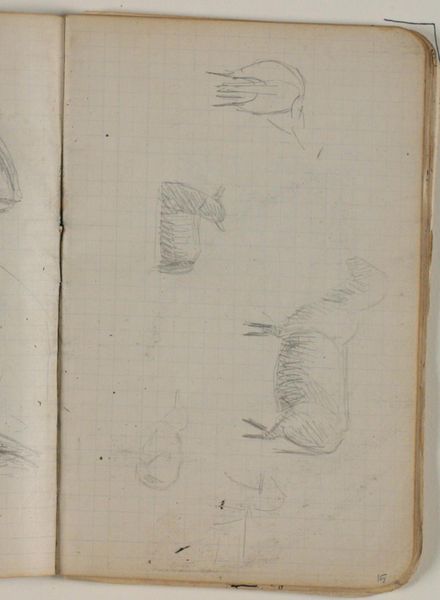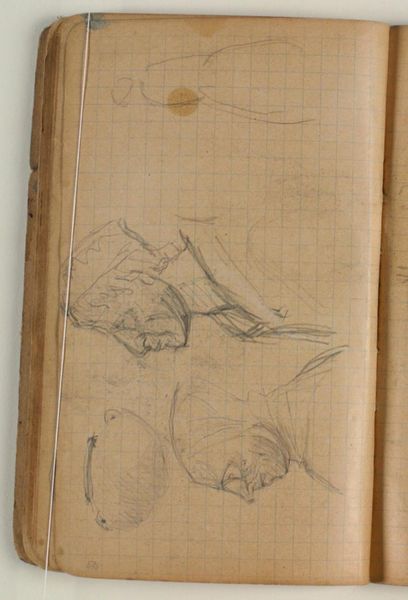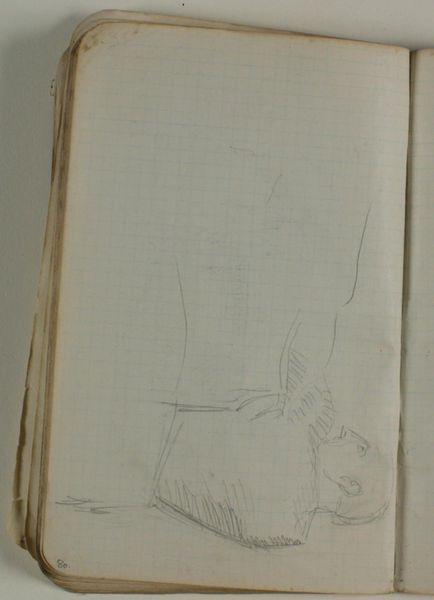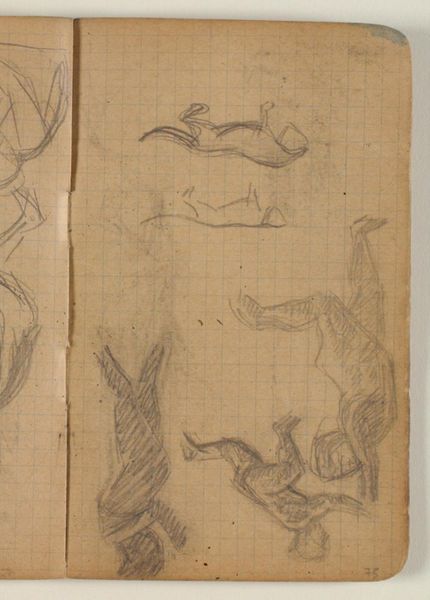
drawing
#
drawing
#
aged paper
#
toned paper
#
light pencil work
#
pencil sketch
#
personal sketchbook
#
sketchbook drawing
#
watercolour bleed
#
watercolour illustration
#
sketchbook art
#
watercolor
Dimensions: 169 mm (height) x 109 mm (width) x 5 mm (depth) (monteringsmaal), 169 mm (height) x 109 mm (width) (bladmaal)
Curator: Today we are looking at a sketchbook page by Niels Larsen Stevns, dating from around 1905 to 1907. It’s entitled “Skitser af andefugle og får,” or "Sketches of waterfowl and sheep," and it’s currently held at the SMK, the National Gallery of Denmark. Editor: Oh, a peek into the artist's mind, I love these. It feels so intimate. There's a tenderness in these fleeting lines; like capturing a dream just as it's fading. Curator: Indeed. Sketchbooks often provide unparalleled insight into an artist's process, offering a glimpse into the evolution of their ideas. What makes this one especially compelling is the juxtaposition of domestic animals with wild birds, a common motif within pastoral artistic movements from the period. These sketches show a particular connection to nature's simplicity. Editor: I agree, there is simplicity, but it also feels unresolved, doesn't it? As if he’s wrestling with something – not quite capturing the essence of those woolly sheep or the delicate curve of the duck's neck. Maybe he felt a kind of kinship with these beings? Or just plain, old-fashioned artist frustration. I've been there! Curator: Considering Stevns' broader oeuvre, especially his paintings depicting peasant life and agrarian landscapes, these sketches take on another layer of meaning. We see Stevns actively engaging with themes of rural identity and the relationship between humans and their environment. How does one represent, with empathy, those creatures which provide both comfort, material, and spiritual sustenance? Editor: Right. The artist seems preoccupied with the underlying architecture of his subjects. Check out that sheep towards the lower right; it’s just angles! I mean, he reduces these creatures to geometric suggestion – it's about line and form, more than some kind of naturalistic accuracy, wouldn't you say? There is no hierarchy or obvious focal point within the page either. Curator: I think you've hit upon something key there. It is not about portraying animals, as about trying to capture their place within the fabric of everyday life in Denmark at the turn of the century. They don't become sentimental; they are made essential. Editor: Okay, I’m seeing that. These seemingly hurried lines are more deliberate than they first appeared. Curator: Absolutely. Now we start to question whether those geometric forms represent an attempt to dissect and understand systems of economic power through representations of working animals within his drawings. They ask us about sustainability, environmental pressures, and the importance of rural life in Denmark then, and in our imaginations today. Editor: Makes you wonder what he scribbled on the next page, doesn't it? I suddenly want to buy a sketchbook and reconnect with *my* fleeting impressions. Thanks for cracking that open!
Comments
No comments
Be the first to comment and join the conversation on the ultimate creative platform.
